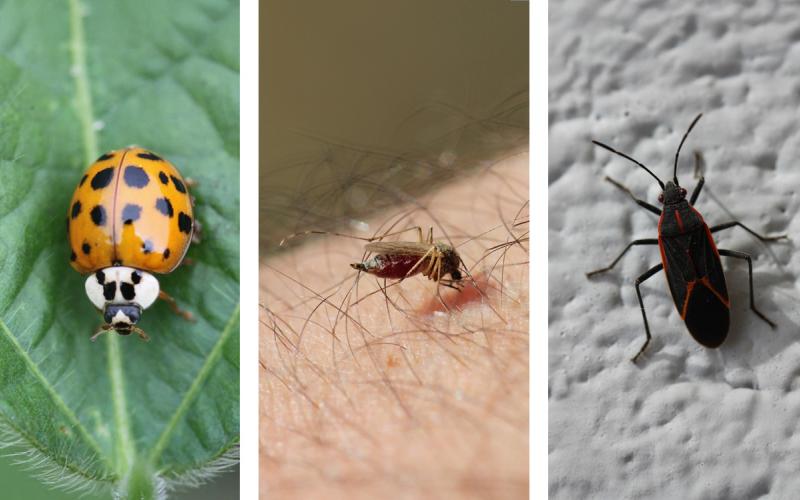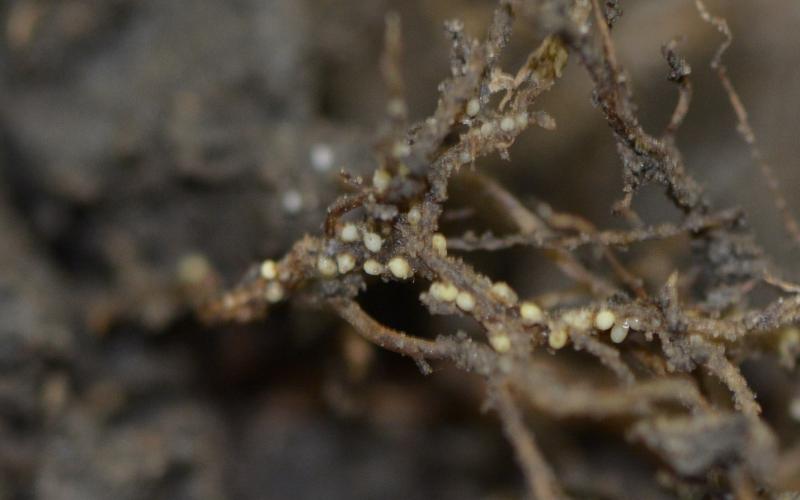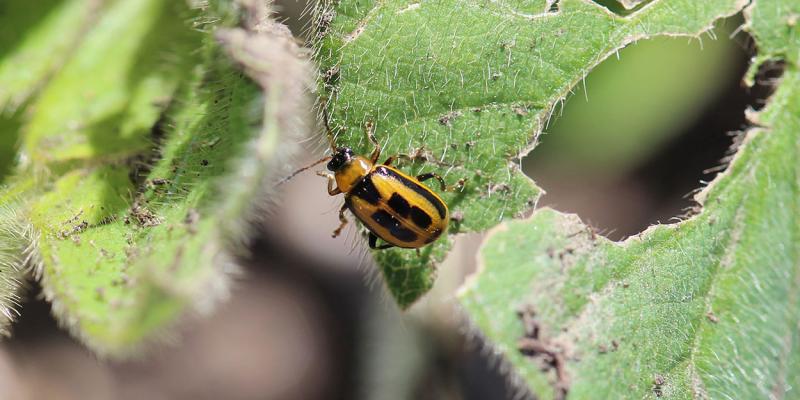
Written collaboratively by Adam Varenhorst, Philip Rozeboom, Patrick Wagner, and Brad McManus.
Originally Submitted: June 2, 2023
With soybean emergence well underway, the next concern is early-season bean leaf beetle defoliation.
While scouting soybean fields in the southeast corner of the state, we observed plants with small holes, indicating bean leaf beetle activity.
Although bean leaf beetle survival in 2023 was expected to be very minimal, snow cover likely provided enough shelter for overwintering populations to survive.
Scouting and Management Decisions
For bean leaf beetles, the recommended threshold is 20% defoliation prior to flowering, but estimating the percent defoliation on the unifoliate leaves can be difficult. An alternative method is to count the number of adult bean leaf beetles per plant.
To scout for early-season bean leaf beetles, examine 20 plants in five different areas of the field. If you are using the defoliation threshold, look for holes in the leaves as well as feeding on the stems or cotyledons (Figure 2). Management is recommended when an average of 20% of the leaf tissue is removed from the scouted plants (Figure 3).
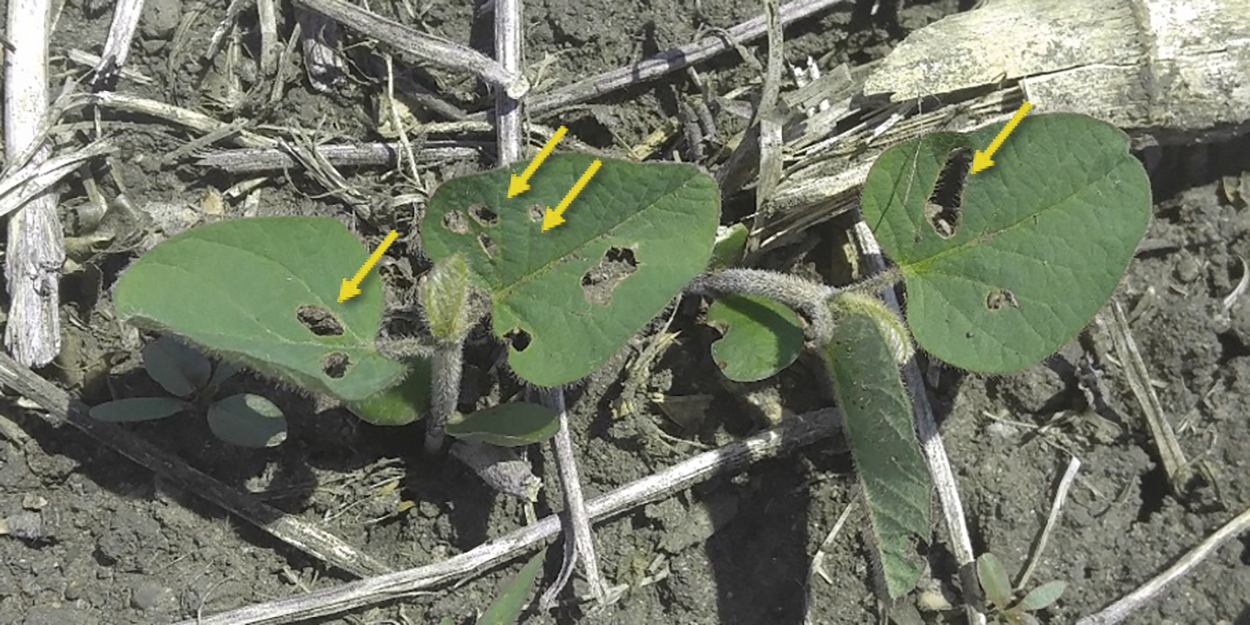
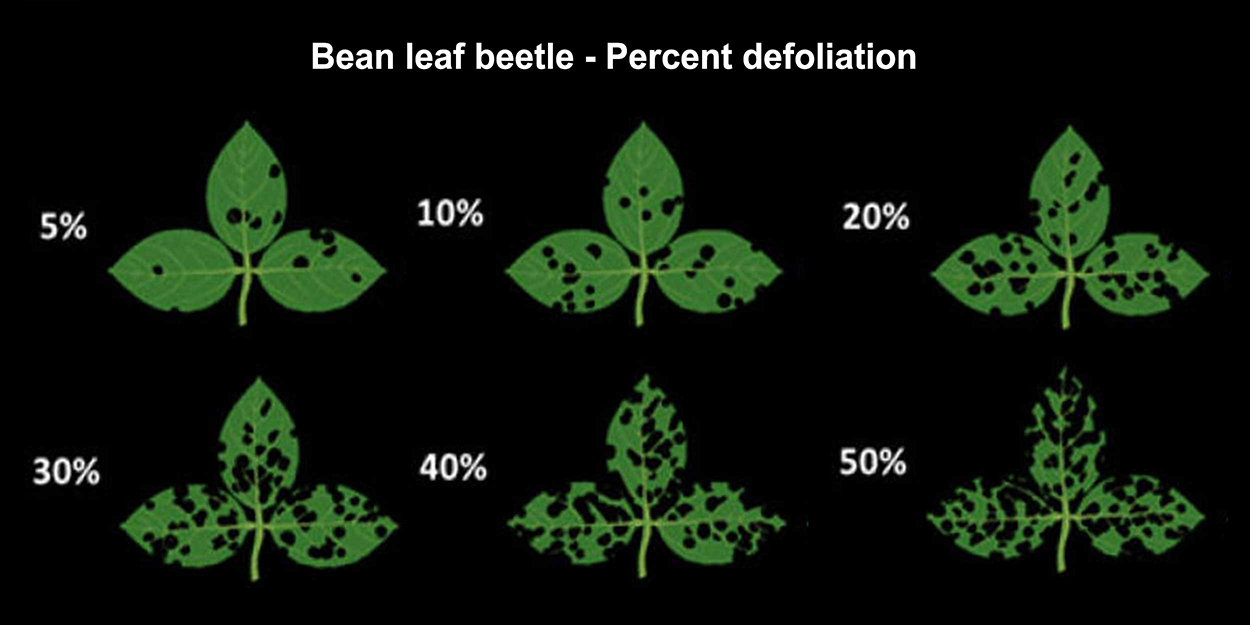
Although sweep nets can be used later in the season, newly emerged soybean should not be swept to avoid breaking plants. Instead, use visual counts of bean leaf beetle adults. To do this, look at three feet of row, or approximately 20 plants, from five different areas throughout the field. When counting adults, it is important to avoid disturbing the plants, as bean leaf beetles will often drop to the ground. Avoid casting a shadow on the plants that are being scouted, as that will also cause beetles to drop from the plants.
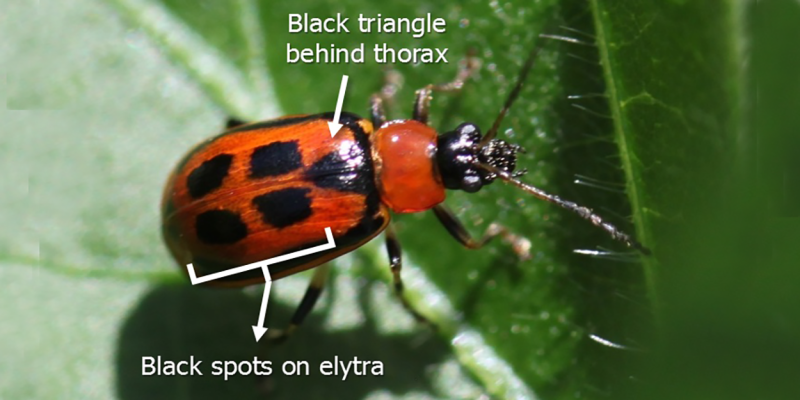
The adult bean leaf beetles can vary in color from brown, orange, yellow, red and varying shades of those colors. Adults can be identified by the black triangle present behind their thorax (Figure 4). Adults will also have black heads and will generally have four spots on their hardened forewings (elytra). Management should be considered when you observe an average of 2 to 4 bean leaf beetles this way.
Products labeled for bean leaf beetle in South Dakota can be found in the latest South Dakota Pest Management Guide for Soybeans.

